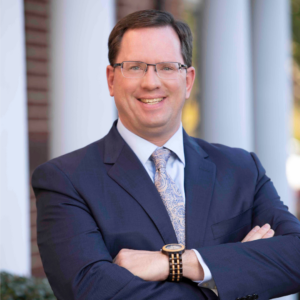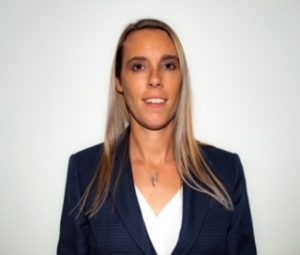Serving Up Hospitality Through Community Initiatives
Based in Evanston, Illinois, just north of Chicago, Mather LifeWays is a not-for-profit organization that enhances the lives of older adults by creating Ways to Age WellSM through senior living residences, the Institute on Aging’s research and education, and Community Initiatives. There are six dimensions of wellness. They include: social, vocational, spiritual, intellectual, emotional, and physical. They are integrated into every aspect of Mather LifeWays.
Mather LifeWays’ Community Initiatives includes several Mather’s—More Than a Café locations which recognizes that the majority of older adults are vital, active people who are lifelong learners and able to live happily, productively, and economically in their communities.
The Café’s initial draw is the restaurant, but its benefits extend beyond food and nutrition. Although people of all ages are welcome and encouraged to eat, the setting offers engaging programs and classes geared toward those 55 years and older. The “ageless” environment has been recognized with numerous national awards including the 2003 Community Service Award from American Association of Homes and Services for the Aging, the 2003 Best Practices Award from Life Services Network, the 2003 Partnership Award from the Arthritis Foundation, the 2002 Architectural Excellence in Community Design, and the 2002 Best Practice Award from the National Council on Aging’s Health Promotion Institute, just to name a few.
One of America’s most successful restaurant operators, Danny Meyer, who wrote Setting the Table: The Transforming Power of Hospitality in Business, believes that it’s not enough to have a superior product; his “enlightened hospitality” is about how you make your customers feel while using that product that will bond your customers to you. The pioneers of Mather’s—More Than a Café figured out early on that customers were coming for more than the great food and programs—they were coming for the experience. In 2002, Mather’s—More Than a Café staff embarked on a journey to document, step by step, how it was creating and managing customers’ experiences. They studied other companies that adopted great customer service philosophies and took on reading assignments, one of which was Nuts!: Southwest Airlines’ Crazy Recipe for Business and Personal Success by Kevin and Jackie Freiberg. Another helpful book was Fish!: A Remarkable Way to Boost Morale and Improve Results by Stephen C. Lundin, Harry Paul, and John Christensen, which discussed a Seattle-based world-famous fish market known for its fun, bustling, joyful atmosphere and great customer service. The infamous FISH! video was shown to all staff, and they learned the well-known FISH! Principles: Play, Be There, Choose Your Attitude, Make Their Day.
Customer Service Training
The Café staff training workshops on customer service had a “performance theme,” complete with popcorn, movie ticket prizes, and exercises such as The Service Triangle, The Cycle of Service, and Moments of Truth. The exercises involved the step-by-step documentation of a customer’s entire experience—from parking the car to entering the café to ordering food or engaging in a program. The goal was to help staff recognize all of the direct “touch points” they have with customers and the indirect, non-service-oriented touch points that get noticed by customers, such as fingerprints on the front door and trash on the sidewalk. The exercises emphasized that the experience of accessing services should be seamless and easy for customers, and that myriad opportunities exist to create positive impressions in the mind of the customer along the continuum of service. The workshops’ objective was to create not only a greater awareness of the many potential touch points staff have with customers, but also to think about how they can add the differentiating piece: an element of hospitality.
The Dream
Next, Mather’s—More Than a Café put into words the “extra special—the essence—of what it was providing. To that end, the Mather’s—More Than a Café Dream, along with “experience standards” to achieve the Dream, was a product of these workshops. To fulfill Mather’s—More Than a Café Dream, staff members learn to make Vital Connections to create Extraordinary Experiences and Exciting Possibilities.
Vital Connections. This component of the Dream focuses on taking action to make every customer and colleague feel special, valued, and important. The five behaviors (welcome, initiate, invite, personalize, appreciate) can be taught, emphasized, tracked, and rewarded to encourage employees to reach out to customers. Thus:
Welcome. Greet everyone and extend warm welcome and welcome back.
Initiate. Go the extra mile to exceed expectations.
Invite. Invite people back, invite customers to tell their friends, invite people to participate.
Personalize. Use customers’ names and remember personal preferences and milestones.
Appreciate. Express thanks and appreciation for participation and/or referrals.
Were employees successful in translating their training to real-life situations? The following comments illustrate examples of how employees implemented the five elements of Vital Connections:
Welcome
From a cook: “As a new customer was walking up to the counter to order, she suddenly started coughing. I welcomed her with a glass of water and then said ‘Welcome to Mather’s—More Than a Café! May I take your order?’”
From a receptionist: “As if ‘Welcome to Mather’s—More Than a Café’ wasn’t enough! What a wonderful line to greet our customers with. Even our regular return customers love to hear it, especially when you smile while greeting them. It shows you really are happy to see them.
“When customers see you are busy at the desk, but [you] still take time to say ‘Thanks for coming, please come again. We enjoy having you here,’ it takes them by surprise that you noticed they were leaving. They turn your way, smile, and say ‘Thanks, I enjoyed myself and, yes, I will return.’ It helps to make your day at work so much better.”
Initiate
From an executive director: “While I was at Mather’s on Higgins to open the Café for Spanish and computer classes, a grandfather was babysitting his granddaughter while the grandmother took Spanish. I took the initiative to offer hot cocoa and turn on a computer so the child could play games while they waited.”
From a cook: “I created a new breakfast special that we had not made before and it went very well.”
Invite
From the master chef, Culinary Delights: “While I was at the zoo with my son, a Mather’s customer was there with friends. We talked about the café and her friends were very interested in learning more, so I invited them to come to the Café.”
From a Café manager: “A customer called with questions about computer classes. After answering them, I invited him to visit the café. He came in later that same day.”
Personalize
From a Café manager: “We have a customer who loves Mather’s chicken wings and asks for them all of the time, so much so that it has become something of a running joke. They are rarely on the menu but when I saw chicken wings written on the specials board this past Wednesday, I phoned to let her know. She was delighted with the personal service.”
From a service assistant: “Remi came in early two days in a row to have time to shovel and salt all of the sidewalks before the customers began to arrive. He took personal responsibility by acting to let our customers know that we care about their personal comfort and safety.”
From a Café manager and receptionist: “We personally called former exercise students to tell them of our new fabulous instructor and encouraged them to start the New Year with a bang!”
Appreciate
From a receptionist: “This week I exercised my creativity by personally designing ‘Miss You’ cards. This lets our customers know that we not only miss them, but are concerned and appreciate their business.”
From the vice-president: “I show my appreciation of my coworkers by calling, e-mailing, or faxing a ‘Happy Anniversary’ greeting on their annual Mather LifeWays anniversaries.”
Extraordinary Experiences. Employees are encouraged to make every interaction with customers an experience that will be valued, celebrated, and remembered. At Mather’s—More Than a Café, we believe that work is play and should be fun. (Customers are included in that fun, of course!) Employee comments support the validity of that purpose:
From a resource assistant: “One of our Edgewater members called Info Plus and mentioned that she was unable to read all the information printed in the newsletter. So, I mailed a separate sheet of paper with programs in large, bold print.”
From a service assistant: “On Wednesday, as the customer was getting her blood pressure taken, she told the nurse that she just fell outside in the middle of Grand Avenue. After the nurse checked her over and she had some soup, I walked her home. She only lived around the corner, but I took the time to make sure she got home safely. She was very thankful and felt much more comfortable walking home with someone, especially crossing a busy street.”
Exciting Possibilities. Finally, the Exciting Possibilities part of the Dream encourages employees to focus on lifelong learning and engagement. For both employees and customers, opportunities are created to try new activities and approaches, to be creative and willing to learn.
From the manager of Wellness Initiatives: “When working with the new members of the fitness center, I emphasize to them the benefits they will realize from living a physically active lifestyle, and exercise will open up a whole new world of possibilities regarding what they can participate in and achieve in their daily lives.”
From a cook: “I helped one of our customers open up an attachment on the computer. The customer was very excited because there were pictures of the grandchildren.”
The Dream in Action
Initially, to implement the Dream, employees wore colorful buttons that signified and emphasized one of the five behaviors encouraged by Vital Connections. At the beginning of each week, five-minute meetings were held to recognize great performance from the week before and to strengthen the concept for the upcoming week. At the end of each week, stories were collected from each employee about how they implemented the behavior.
Stories were collected and shared division- and organization-wide for the “Recognition Round-Up,” providing terrific examples of employees thinking how to better serve the customers and each other, and then putting these ideas into action. At all staff meetings, each employee’s picture is featured next to one of his or her stories, and votes are taken for the favorite one. Prizes are awarded to the winners.
Community Initiative’s approach was so successful that it was adopted organization-wide within Mather LifeWays and is now referred to as the mather experience (or me!). Recognition forms are posted publicly, and employees who provide “legendary” service are inducted into the me! Hall of Fame. The culture also is reinforced through a job performance review process, when employees are rated on how well they demonstrate the organization’s core values.
While the colorful buttons are no longer used, the Dream is still alive and well. Stories are shared regularly and customer satisfaction surveys administered annually at each of the cafés reveals an overall increase in satisfaction. On overall satisfaction with services, scores have gone from 90% in 2004 to 98% in 2006. On the question of being satisfied with their decision to visit, scores have gone from 94% in 2004 to 97% in 2006. Finally, on the question of whether a customer would recommend Mather’s—More Than a Café to friends and family, that score has stayed strong at 96% in 2004 and 2006.
For more information, call (847) 492-6806 or visit https://www.matherlifeways.com. To send your comments to the author and editors, e-mail sassen1207@nursinghomesmagazine.com.
I Advance Senior Care is the industry-leading source for practical, in-depth, business-building, and resident care information for owners, executives, administrators, and directors of nursing at assisted living communities, skilled nursing facilities, post-acute facilities, and continuing care retirement communities. The I Advance Senior Care editorial team and industry experts provide market analysis, strategic direction, policy commentary, clinical best-practices, business management, and technology breakthroughs.
I Advance Senior Care is part of the Institute for the Advancement of Senior Care and published by Plain-English Health Care.
Related Articles
Topics: Articles , Design , Leadership , Operations











